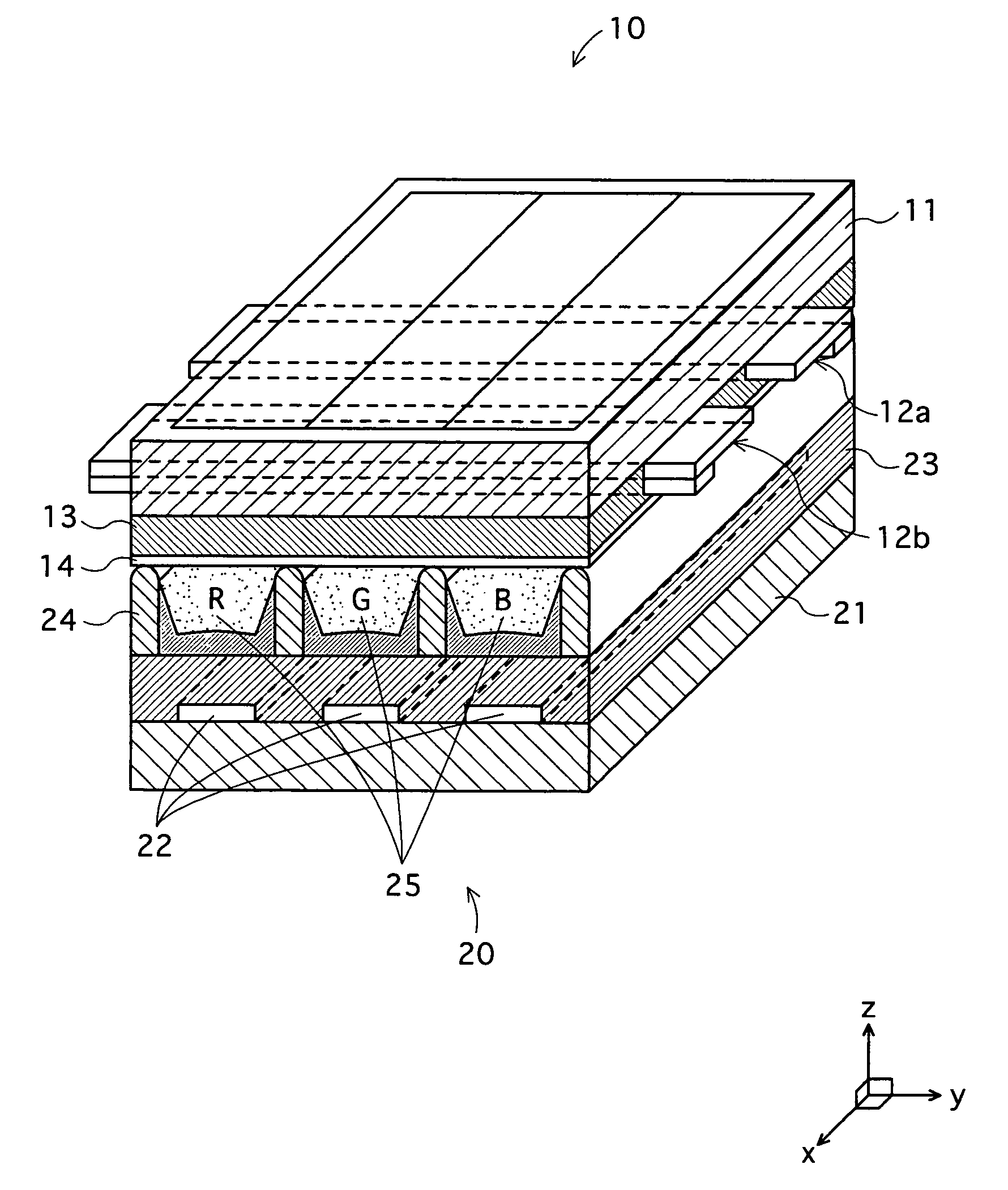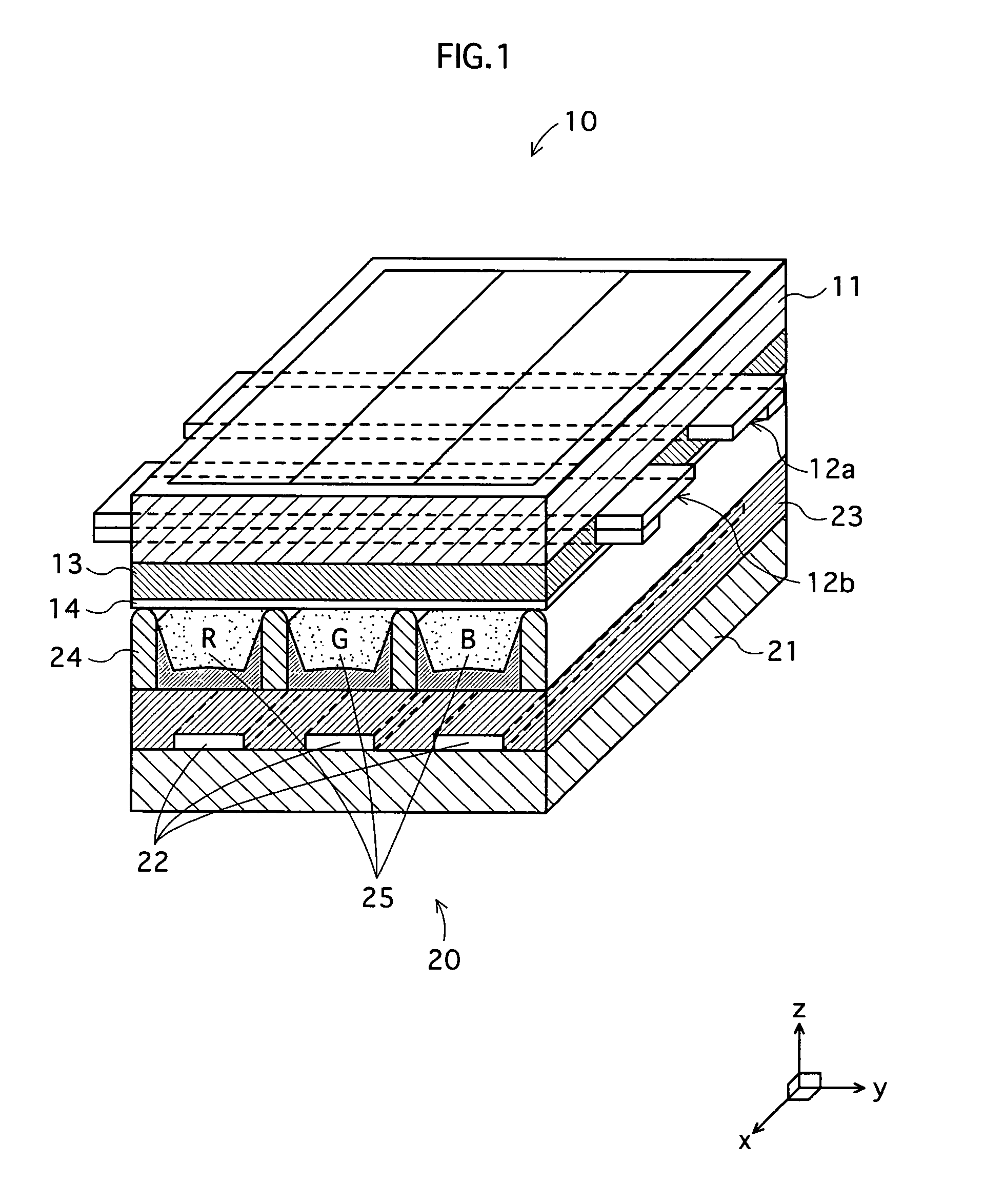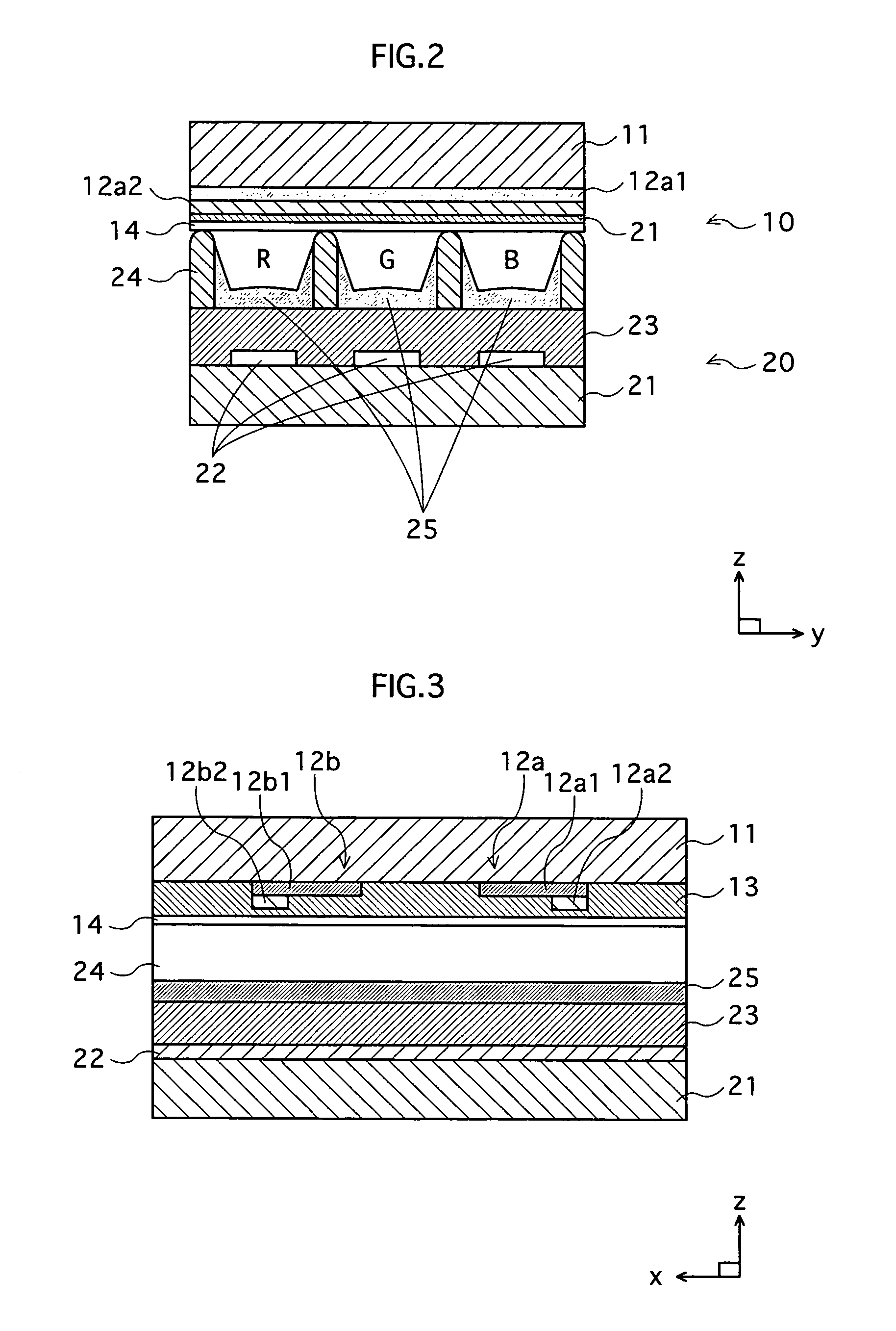Plasma display panel and production method therefor
- Summary
- Abstract
- Description
- Claims
- Application Information
AI Technical Summary
Benefits of technology
Problems solved by technology
Method used
Image
Examples
Embodiment Construction
[0034]One embodiment of the PDP of the present invention is explained below with reference to the drawings. The aim of the preferred embodiment, and the drawings of the invention of the present application which are shown below, is to show examples, and the present invention is not limited to these.
[0035](Construction of PDP)
[0036]First, the construction of PDP will be explained.
[0037]FIG. 1 is a perspective drawing of a part of the (AC) PDP of the present embodiment, FIG. 2 is a cross-sectional drawing of the PDP of FIG. 1 viewed along an x axis, and FIG. 3 is a cross-sectional drawing of the PDP of FIG. 1 viewed along a y axis.
[0038]As shown in FIG. 1, the PDP has a construction which includes a front panel 10, a back panel 20, and a front glass substrate 11 in the front panel 10, and a back glass substrate 21 in the back panel 20 which are arranged parallel to each other by barrier ribs 24 and the like. The periphery of the substrates 11, 12 are sealed together by flit glass (not...
PUM
| Property | Measurement | Unit |
|---|---|---|
| Fraction | aaaaa | aaaaa |
| Percent by mass | aaaaa | aaaaa |
| Percent by mass | aaaaa | aaaaa |
Abstract
Description
Claims
Application Information
 Login to View More
Login to View More - R&D
- Intellectual Property
- Life Sciences
- Materials
- Tech Scout
- Unparalleled Data Quality
- Higher Quality Content
- 60% Fewer Hallucinations
Browse by: Latest US Patents, China's latest patents, Technical Efficacy Thesaurus, Application Domain, Technology Topic, Popular Technical Reports.
© 2025 PatSnap. All rights reserved.Legal|Privacy policy|Modern Slavery Act Transparency Statement|Sitemap|About US| Contact US: help@patsnap.com



